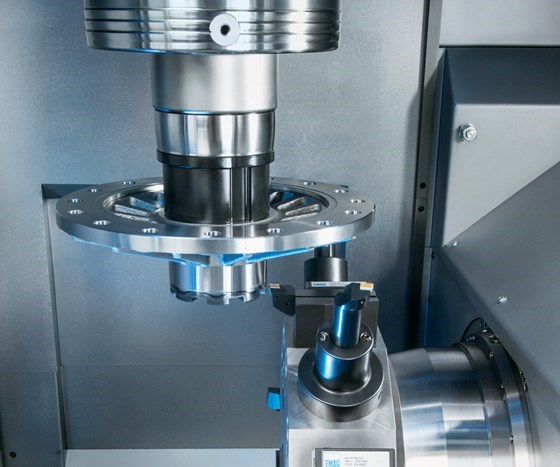Programming Upside Down Lathes
This article shares how advances in programming and sensing technologies have made the use of the inverted vertical tuning center even more productive, efficient and reliable for untended or lightly tended operation.

The metalworking advantages of the inverted vertical turning center are well established. Programming advances for these machines continue to develop.
The mechanical advantages of the inverted vertical turning center are well known and advantageous when correctly applied. Using the main spindle of the CNC VTL as a self-loading/unloading device is like getting a robot free for the price of the machine.
With the workzone generally positioned below the workpiece, chip and coolant control are aided by gravity. These machines are designed for continuous operation and are constricted only by the side of the conveyor system that brings in blanks and take out machined parts.
The article, “Programming Considerations for Inverted Vertical Turning,” shares how advances in programming and sensing technologies have made the use of the inverted vertical tuning center even more productive, efficient and reliable for untended or lightly tended operation. More than a turning center, multiple operations such as milling, drilling and grinding can now be performed on these machines making programming more critical than ever.
Read the article here.
Related Content
-
Laser Technology "Turns" into a Turning Tool
This new technology uses a laser to act as a cutting tool to "turn" parts from solid barstock. This high-speed precision turning machine is especially useful for micromachining, enabling high accuracy for small, complex parts that are often delicate and difficult to machine when implementing conventional turning processes.
-
6 Tips for Training on a Swiss-Type Lathe
There are nuances to training a person to effectively operate a Swiss-type lathe. A shop I visited a while back offers some suggestions.
-
Video: Why a Production Machine Shop Started a Baseball Bat Company
A 153-year-old manufacturer of precision, metal pins recently started a side business creating custom wooden baseball bats. The reasoning behind establishing this new company is intriguing, as is how it has helped create a stronger bond with the local community.





.jpg;maxWidth=300;quality=90)







